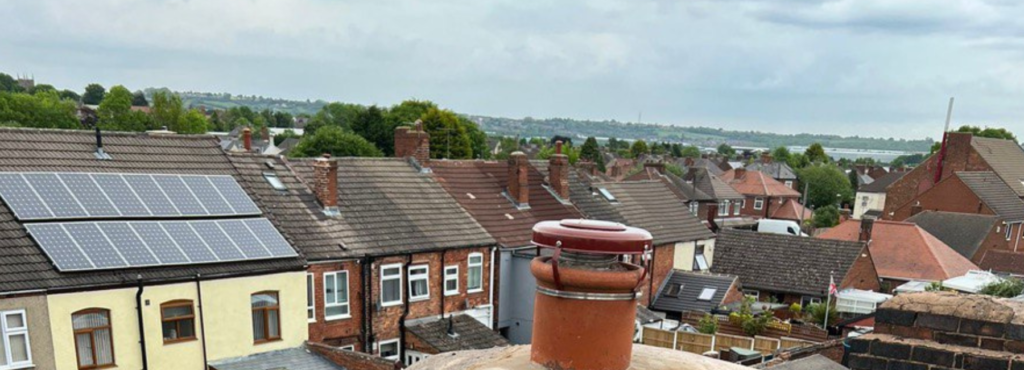Your roofline plays a crucial role in protecting your home. It’s a structure that needs to withstand the elements, and over time, it can show signs of wear. Two common solutions to maintaining the integrity of your roofline are repointing and replacing the materials. Understanding the difference between these two options, and knowing which one is best for your home, is essential.
At Bolsover Roofing Repairs, based in Bolsover, Derbyshire, we provide expert roofing services, including repointing and roofline replacement. In this blog post, we’ll explore both options, discuss when each is appropriate, and help you decide which is best for your roofline.
What is Repointing?
Repointing refers to the process of renewing the mortar joints between bricks or tiles on your roofline. This service is usually necessary when the existing mortar has started to deteriorate due to age or environmental factors such as rain, wind, and freezing temperatures. Repointing helps to restore the strength and integrity of the masonry, improving the roofline’s protection against water ingress.
Key Benefits of Repointing:
- Cost-effective: Repointing is generally cheaper than replacing the entire roofline.
- Preserves existing materials: If the rest of the roofline is in good condition, repointing can restore its functionality without needing to replace large parts of the structure.
- Preventive care: Repointing can help prevent further deterioration, which may save you from more costly repairs down the line.
When to Choose Repointing:
- Minor damage: If the mortar is cracked or crumbling but the rest of the roofline and tiles are in good shape, repointing is often the best solution.
- Aesthetic concerns: If the mortar is beginning to show visible wear and tear but the roofline structure is still sound, repointing can improve the overall appearance.
- Early signs of water damage: Repointing can prevent water from seeping into the structure and causing more extensive damage.
What is Replacing?
Replacing involves removing and replacing the tiles, slates, or other materials that make up your roofline. This is often necessary when the roofline has sustained significant damage that cannot be repaired by repointing alone, or if the materials have simply reached the end of their lifespan.
Key Benefits of Replacing:
- Long-lasting solution: A new roofline offers improved durability, providing long-term protection for your home.
- Enhanced aesthetics: Replacing old, worn-out tiles or slates can drastically improve the appearance of your home.
- Increased energy efficiency: New roofline materials are often more energy-efficient, helping to regulate the temperature inside your home.
When to Choose Replacing:
- Severe damage: If your roofline is extensively damaged, has missing tiles, or is structurally compromised, replacement may be necessary.
- Frequent repairs: If you find yourself needing regular repairs for the same issues, replacing the roofline could save you money in the long run.
- Outdated materials: Older roofline materials may not be as effective as modern alternatives in terms of durability and energy efficiency.
How to Decide: Repointing vs Replacing
Choosing between repointing and replacing comes down to the extent of the damage, the age of the materials, and your long-term goals for the property. Here are some things to consider when making your decision:
1. Cost and Budget
Repointing is generally much more affordable than replacing the roofline. If your roofline is in good shape overall but requires minor repairs, repointing is an economical solution. However, if your roofline is significantly damaged or outdated, a replacement may be more cost-effective in the long run.
2. Condition of the Roofline
If only the mortar joints are damaged and the tiles or slates are in good condition, repointing is likely the best option. However, if the tiles themselves are damaged, cracked, or missing, a full replacement may be required to restore the roofline’s integrity.
3. Long-Term Value
While repointing can extend the life of your roofline, replacing it with more durable, energy-efficient materials can add long-term value to your home. If you plan to stay in the property for many years, or if you’re considering selling, a full replacement could improve the overall marketability and value of your home.
4. Urgency
Repointing is generally a quicker job than a full roofline replacement. If you need to address immediate issues, such as preventing water ingress, repointing may offer a faster and more temporary fix until a complete replacement is possible.
Conclusion
When it comes to maintaining your roofline, repointing and replacing are both effective solutions depending on the circumstances. Repointing is a great way to address minor issues, preserve your current roofline, and save money. However, if your roofline is severely damaged or nearing the end of its lifespan, replacing the roofline will provide better long-term results.
At Bolsover Roofing Repairs, we offer both repointing and full roofline replacement services in Bolsover, Derbyshire. Our experienced team will assess the condition of your roofline and help you determine the best solution to meet your needs, whether that’s a cost-effective repointing job or a complete replacement.
If you’re unsure about whether your roofline needs repointing or replacing, contact us today for a professional consultation. We are here to help ensure your home stays safe, secure, and looking its best.
Call us on: 01246 948 690
Click here to find out more about Bolsover Roofing Repairs
Click here to complete our contact form and see how we can help with your Roofing needs.

